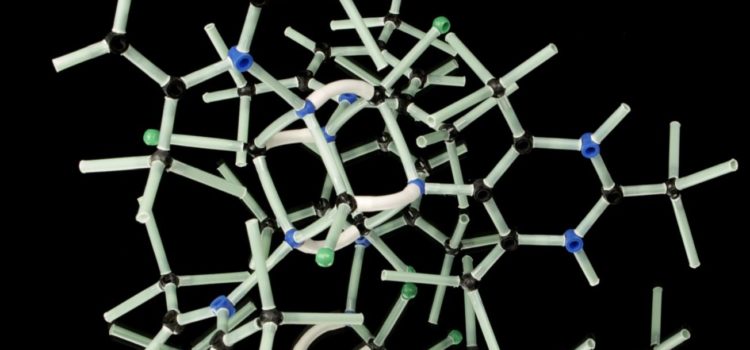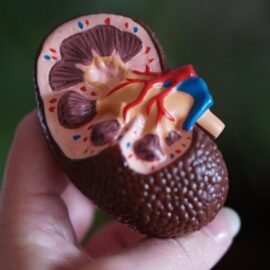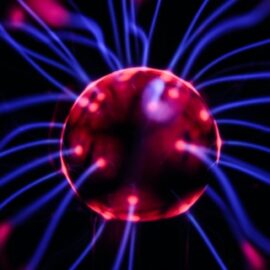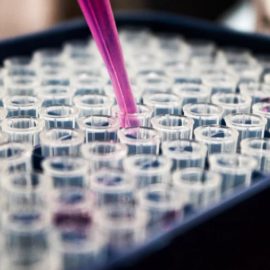

This article is an excerpt from the Shortform book guide to "Lost Connections" by Johann Hari. Shortform has the world's best summaries and analyses of books you should be reading.
Like this article? Sign up for a free trial here .
What are the biological causes of depression? Why does biology play an important role in our understanding of depression?
The two primary biological causes of depression are genetics and neuroplasticity. People with the 5-HTT gene are vulnerable to depression, while neuroplasticity describes the changes that occur in your brain when depression is triggered by psychological and social factors. Biology helps explain depression that cannot be attributed to unfavorable environmental factors.
Read more about the biological causes of depression.
What Are the Biological Causes of Depression?
Now that we’ve explored the many social and environmental factors that contribute to depression, it’s time to explore the biological causes of depression. The fact that biology isn’t the sole cause of (or sole treatment for) depression doesn’t mean there aren’t very real biological factors at play in the disease. The two most important biological factors that influence depression are neuroplasticity and genetics.
Neuroplasticity
Your brain is made up of different parts that control every aspect of your life, from the most basic functions (like remembering to breathe) to the most advanced (like doing calculus or building Swedish flatpack furniture). Neuroplasticity is your brain’s ability to change that structure in response to the environment. It does this by adding and subtracting synapses, which are connections between brain cells. When you learn new information or practice a skill, new synapses form; if you don’t use that skill for decades afterward, the brain prunes those synapses to save energy to power the skills you do use.
The way your brain adds and subtracts synapses depends on how you use it. Essentially, each part of the brain works a bit like a muscle—the more you use it, the bigger and stronger it gets. For example, to pass the licensing test to become a taxi driver in London, you have to navigate between any two points in the city—from memory. Aspiring drivers memorize the entire city map to prepare for the test, and as a result, the part of their brains that handles spatial reasoning literally grows in size. If you took scans of their brains and compared them to other people in different professions, you’d be able to see a physical difference.
Neuroplasticity never stops—your brain keeps changing throughout your entire life. That has two major implications for how we understand depression:
1) For most people, depression creates changes in the brain—not the other way around. Social, psychological, and environmental disconnections deprive the emotion centers of the brain of the happy experiences they need in order to stay in good working order. If those disconnections persist, that unhappiness grows into depression, which makes it even more difficult to establish those connections and ultimately results in further changes in the emotion centers of the brain.
2) The good news is, neuroplasticity also means that depression isn’t a static state, so it’s possible to stop the brain changes depression makes from snowballing out of control. No one is born with a brain that is fundamentally, structurally depressed. Life and environmentally-based changes to your brain may have knocked it into that state, but the right combination of treatments can knock it back out, because changes to the brain aren’t necessarily permanent.
Genetics
The most important of the two biological causes of depression is genetics. There is no single “depression gene,” but there is a particular variant of a gene called 5-HTT that significantly increases your vulnerability to depression. However, just having that gene alone is not enough to make you depressed—it has to be switched on by the environment. A baby born and raised in a perfect environment (with no trauma and all the right connections) wouldn’t spontaneously become depressed, no matter what their genetic makeup. But if a baby with the 5-HTT gene variant and a baby without it are exposed to the same trauma, the former is much more likely to develop depression as a result.
To figure out how big that impact is, scientists compared rates of depression in identical twins against rates of depression in fraternal twins. Fraternal twins share as many genes as any full siblings, but identical twins share all of their genes. This means that if depression is genetic, and one identical twin has depression, the other identical twin is highly likely to have depression too, since they have exactly the same genes. Meanwhile, fraternal twins might be expected to both have depression less frequently, since, while they do share some genes, they don’t necessarily share the gene variant that causes depression.
Scientists can use large data sets of fraternal and identical twins and measure how frequently both twins experience depression. If genetics had no influence on depression, then the identical twins would be no more likely to both be depressed than the fraternal twins. But if there are more sets of identical twins with depression than sets of fraternal twins, that points to at least some genetic component to the disease. By measuring the difference between depression rates in both types of twins, scientists can calculate just how big a role genetics play in depression. This isn’t a perfect method (since even twins can have different life events that can trigger depression differently in each person), but it gives a reliable best estimate for how much your genes contribute to depression.
As it turns out, depression is roughly 37% inherited, while severe anxiety is 30-40% inherited. That means that roughly 63% of the basis for depression comes from somewhere outside of biology. So genes are a big piece of the mental illness puzzle, but they’re not the biggest piece.
The relatively small role that genes play in depression doesn’t affect its primary role among the biological causes of depression. However, even scientists who argue that endogenous depression does exist say that it probably only describes a tiny fraction of people with depression. It’s hard to answer this question definitively because endogenous depression is almost impossible to tease out from “‘reactive” depression—especially since, as we’ve seen, the structure of society itself is a major trigger for depression, so almost everyone has a circumstantial reason to be depressed.
Why Are We So Focused on Biology?
If biology only accounts for a small portion of depression causes, why are we so interested in the biological causes of depression? There are four reasons for this.
1) Sometimes depressed people don’t appear to have “anything to be depressed about.” For example, depression was an epidemic among housewives in the 1950s, even though they “should” have been happy by the standards of their culture. This would suggest to those in that culture that their depression must have been biological, since it didn’t seem to have any other cause.
But looking back now, there were social and environmental causes for this depression that were simply ignored: It’s clear how ridiculous it was to expect women to be happy without the options to have a fulfilling career, opt out of parenthood, pursue higher education, or prioritize anything other than having a piping hot meal on the table the moment their husbands walked in the door.
2) Mental health stigma is still a widespread problem. People dealing with depression and anxiety are often told that mental illness doesn’t exist and that they’re just choosing to be lazy or self-indulgent. As a result, many people cling to the “broken brain” model to defend themselves from these kinds of attacks—because if depression is a disease, then its symptoms are no more a choice than the symptoms of cancer or AIDS.
Unfortunately, this defense doesn’t seem to work in the long run: People are often just as hostile to the idea that depression is biological. In one study, the researchers told participants they were testing different learning styles and asked them to wait a few minutes while they set up the equipment. In the waiting room, an actor posing as another participant would strike up a conversation and make a passing reference to his mental illness, which, on different occasions, he said was either a biological “disease” or the result of a traumatic childhood.
After this conversation, researchers brought the participants to a different room and told them they’d be teaching a “learner” (the actor) how to push a set of buttons in a particular pattern. When the learner got the pattern wrong, researchers told participants to administer a small electric shock by pressing a certain button for as long as they thought was necessary (in reality, the shocks were fake, but the actor would react as though they were real—and painful).
The results of the study were surprising—people who were told the person they were shocking had a “biological disease” were more likely to hurt him than people who were told his depression was caused by life events. In other words, believing that depression is a “brain disease” doesn’t actually reduce stigma or hostility toward people with depression.
3) Acknowledging that our hierarchical society is making people sick is a threat to the people in power. Roughly one out of every five adults in the United States takes some type of psychiatric medication. If all of those people recognized the institutional structures that are making them miserable and demanded a change, it would be a serious threat to the people who benefit from those same structures. Keeping the focus on biology ensures we see depression as an individual problem needing individual solutions rather than seeking collective solutions that might force those people to give up some degree of power and privilege.
4) The idea that our brains are chemically broken is the underpinning of the multi-billion dollar pharmaceutical industry. As a result, we are constantly bombarded with advertisements for the newest antidepressants that promise to boost our serotonin levels, because the “broken brain” idea keeps people coming back for more and more new drugs. Pharmaceutical companies can’t make a profit off of treatments like “spend more time in nature,” so they have a strong motivation to push the idea of a chemically imbalanced brain in order to keep their profits flowing.

———End of Preview———
Like what you just read? Read the rest of the world's best book summary and analysis of Johann Hari's "Lost Connections" at Shortform .
Here's what you'll find in our full Lost Connections summary :
- The psychological and social factors that contribute to mental illness
- The history of antidepressants and the science behind them
- Why Amish people hardly ever get depressed






